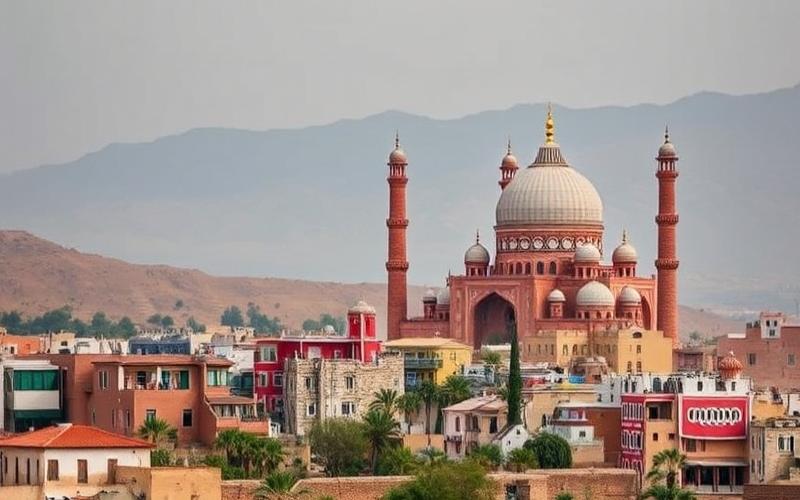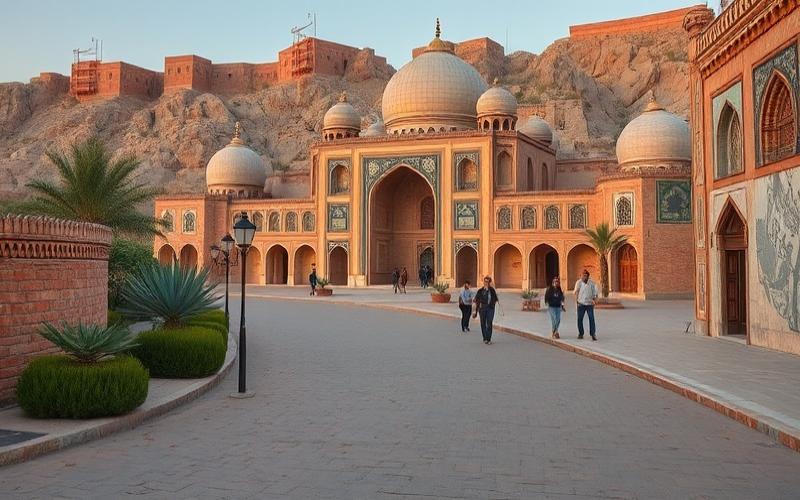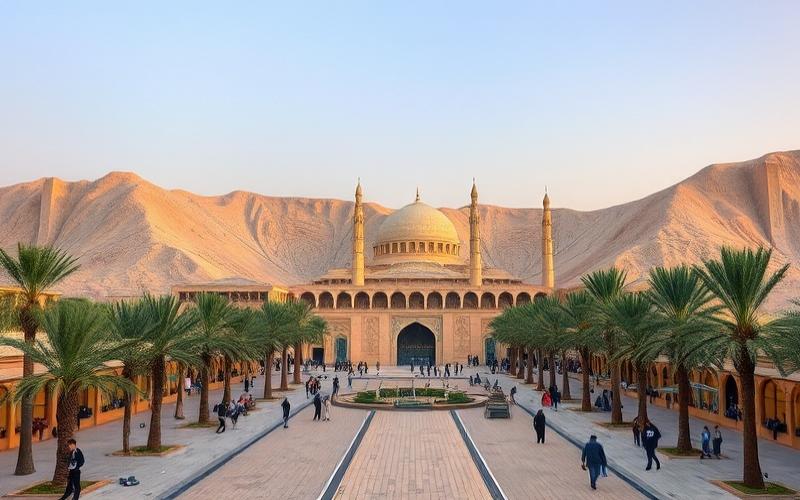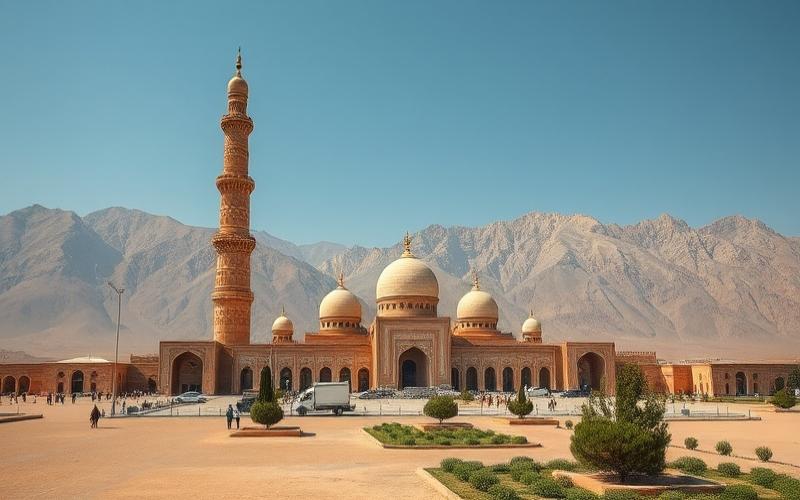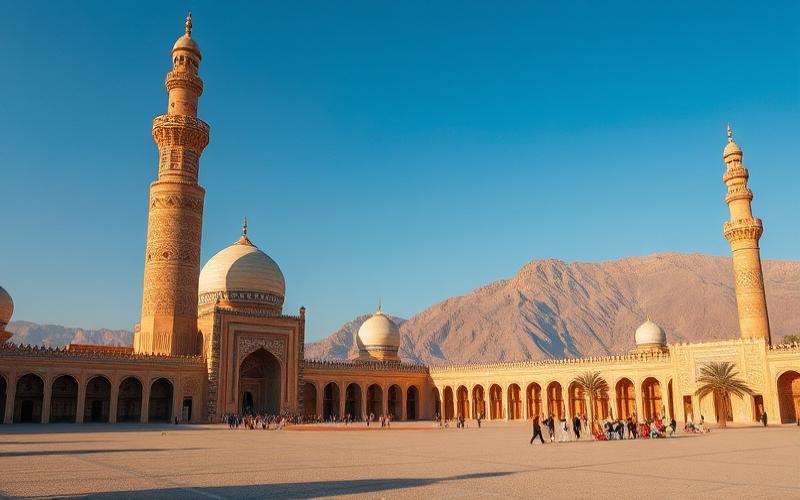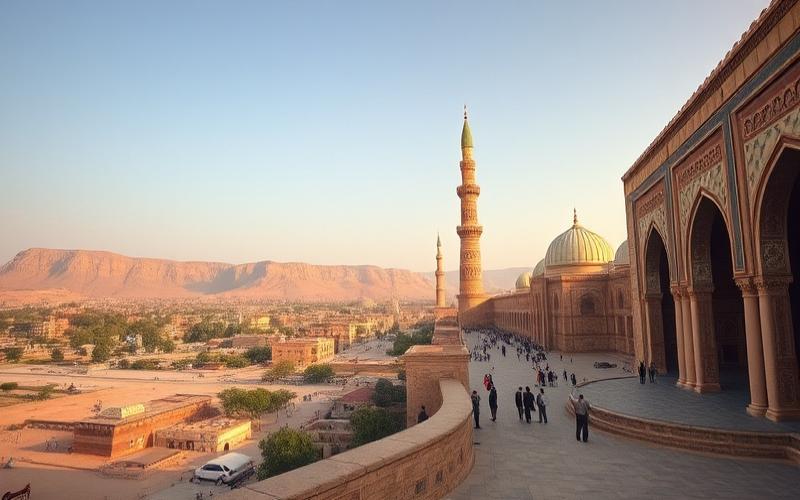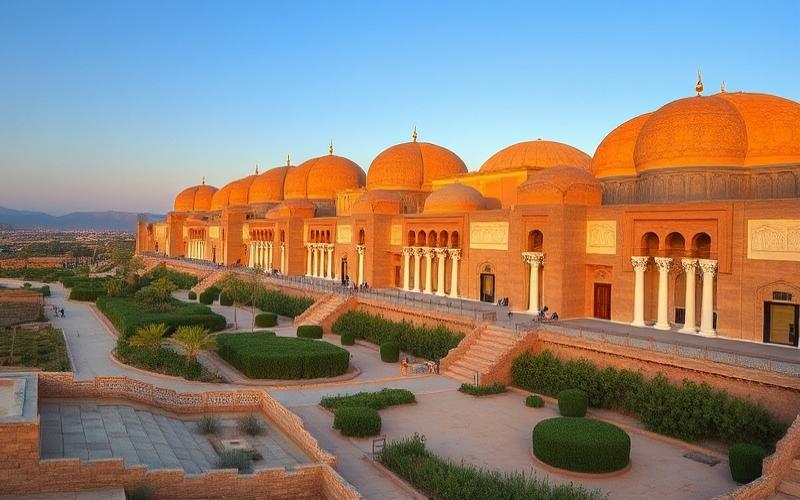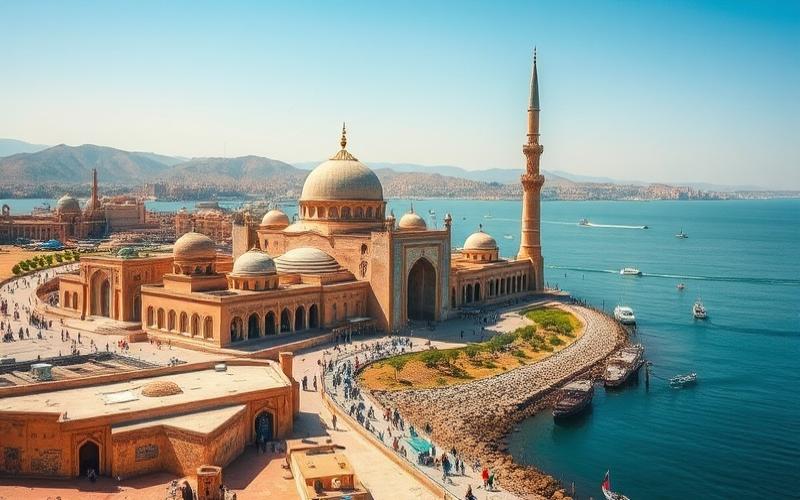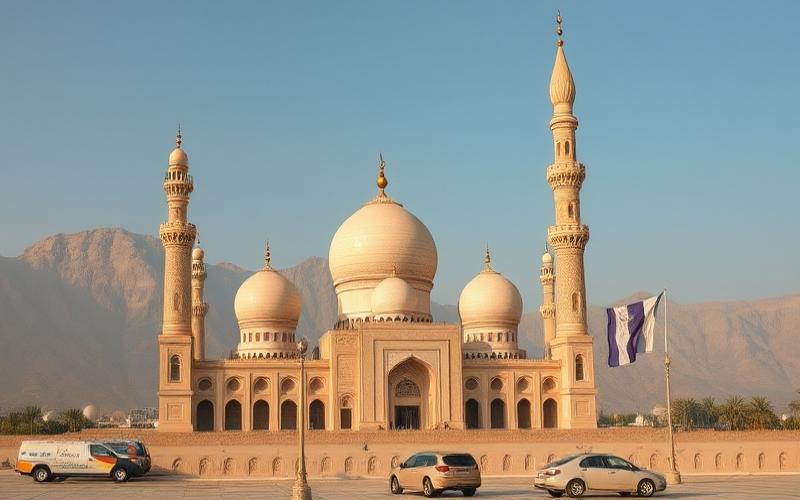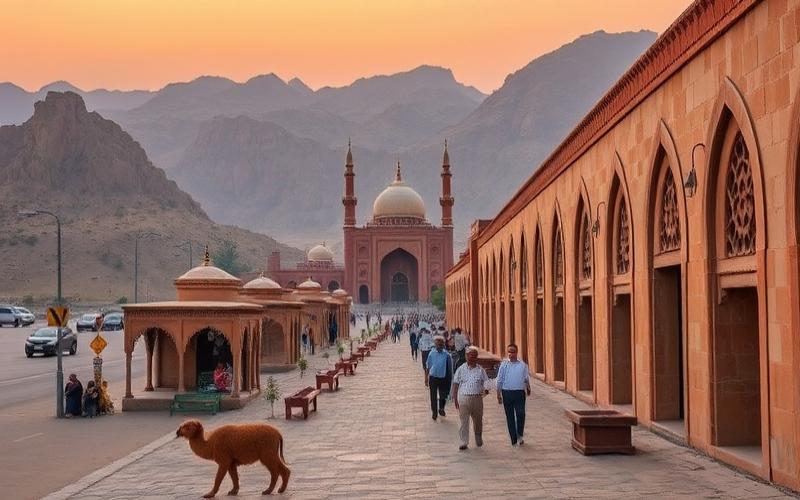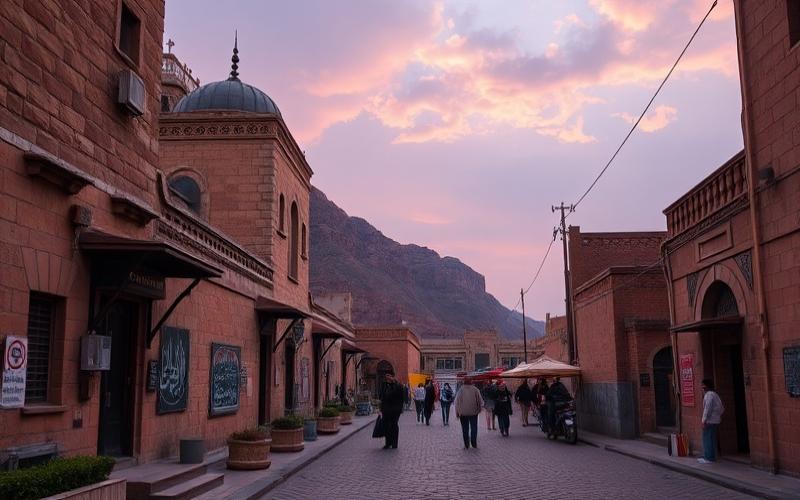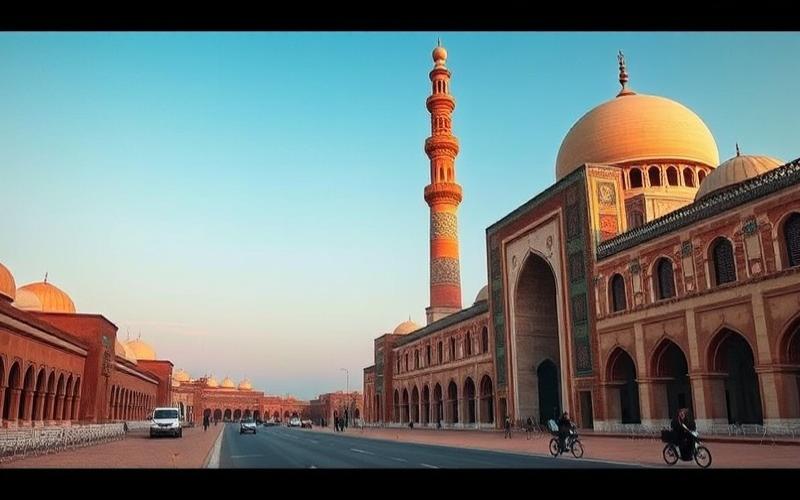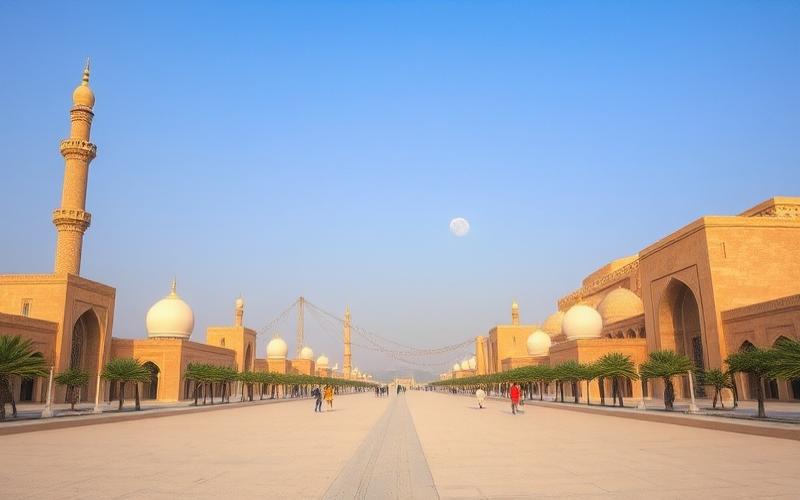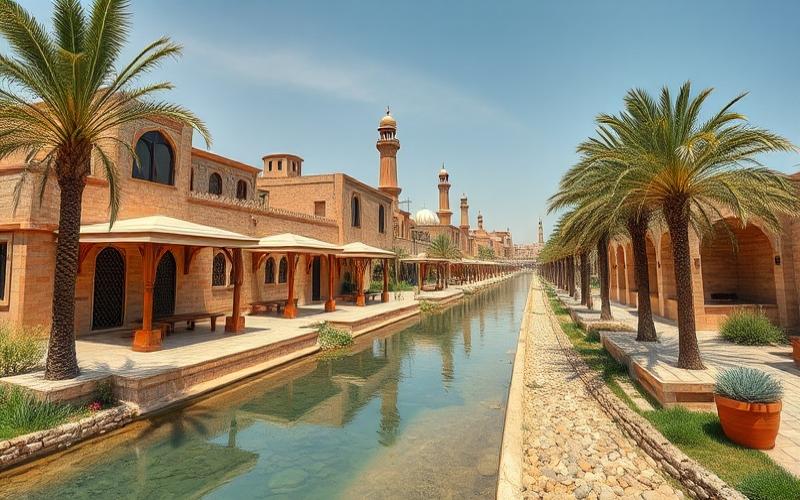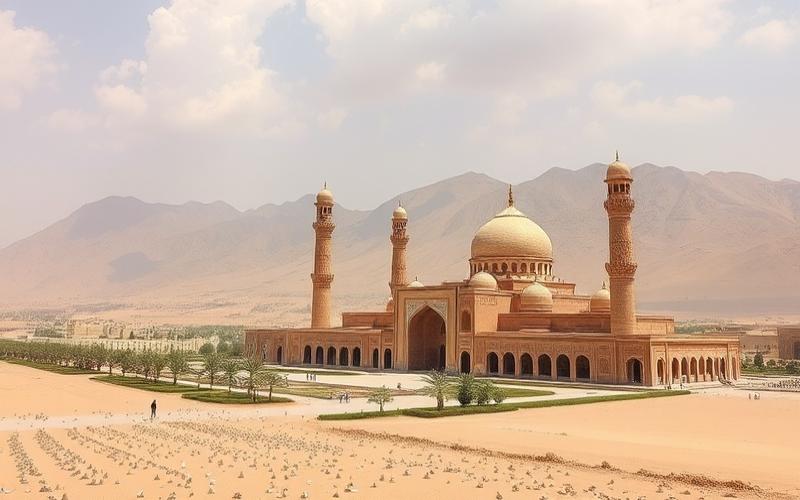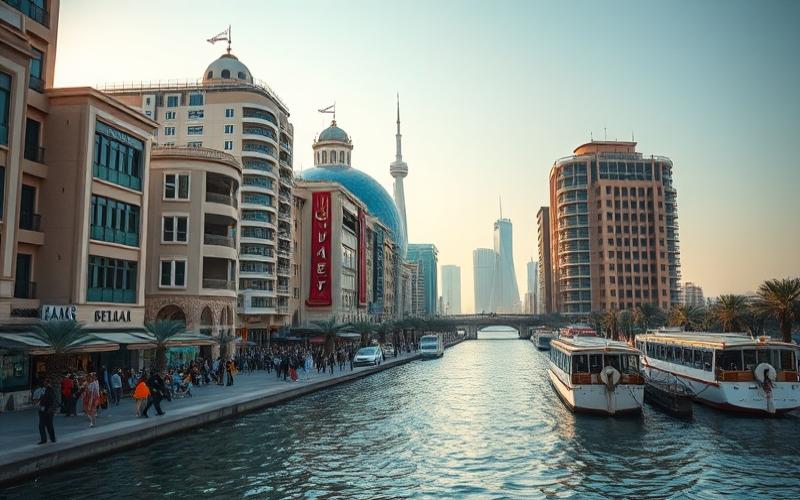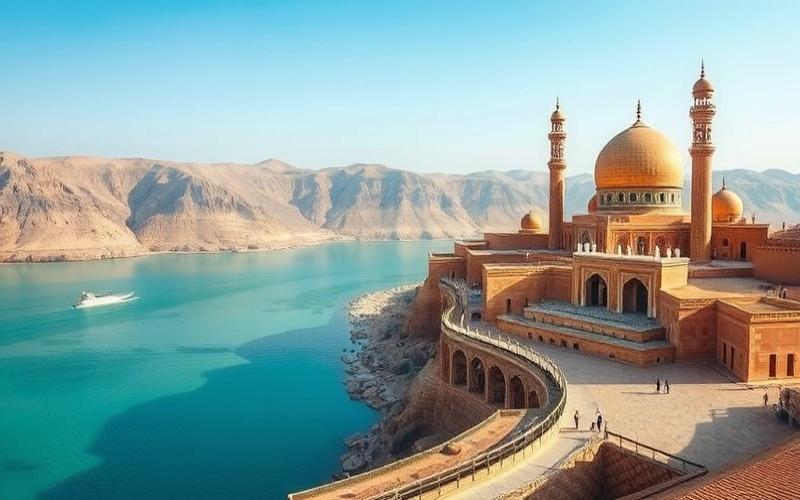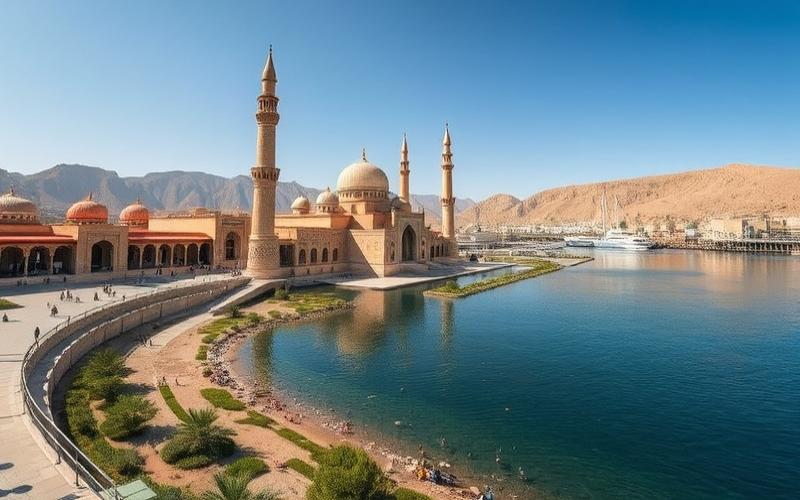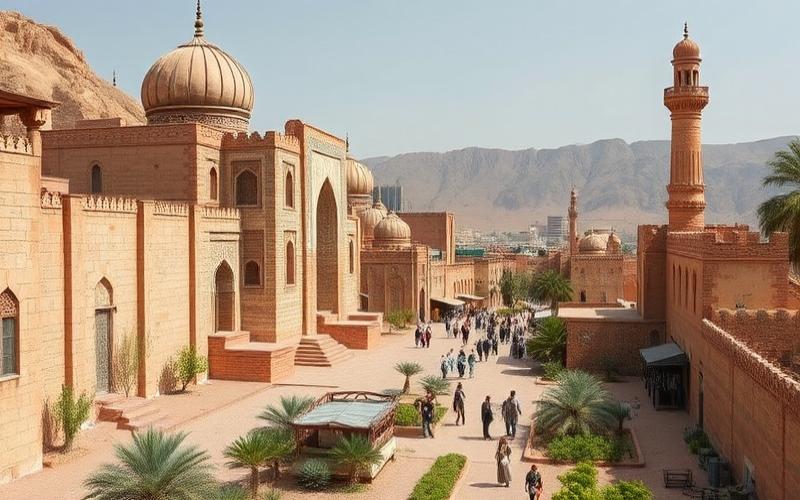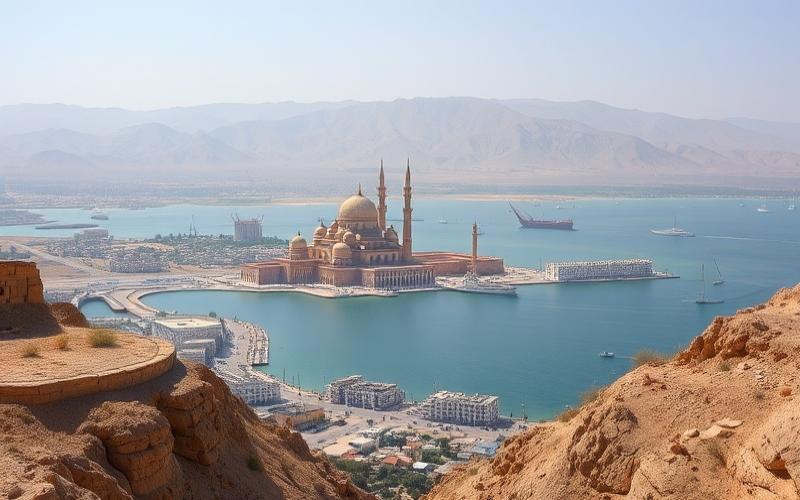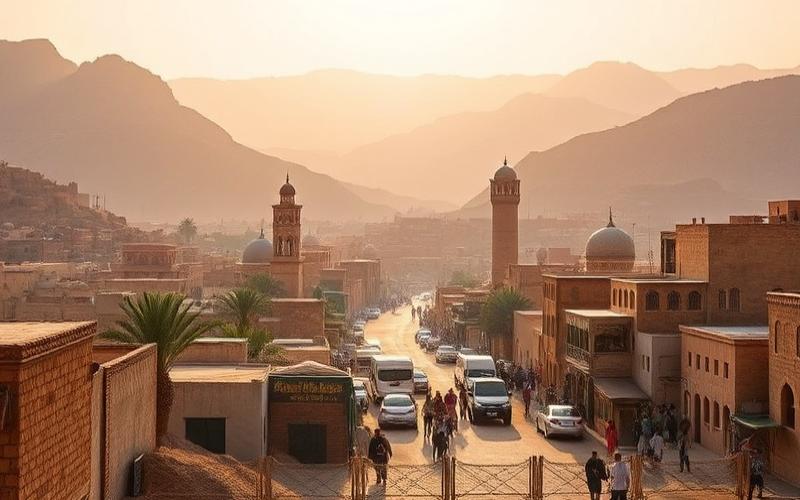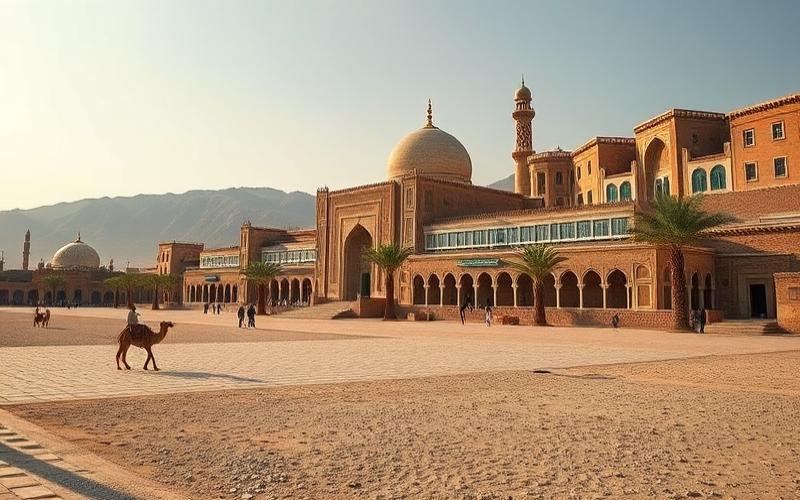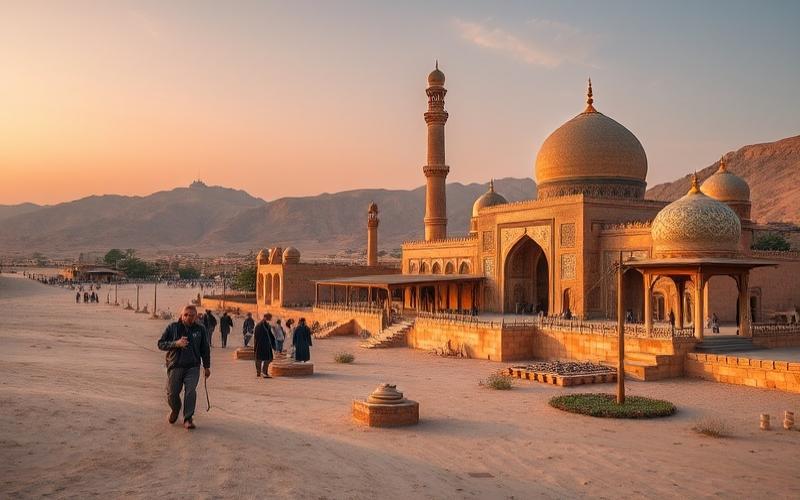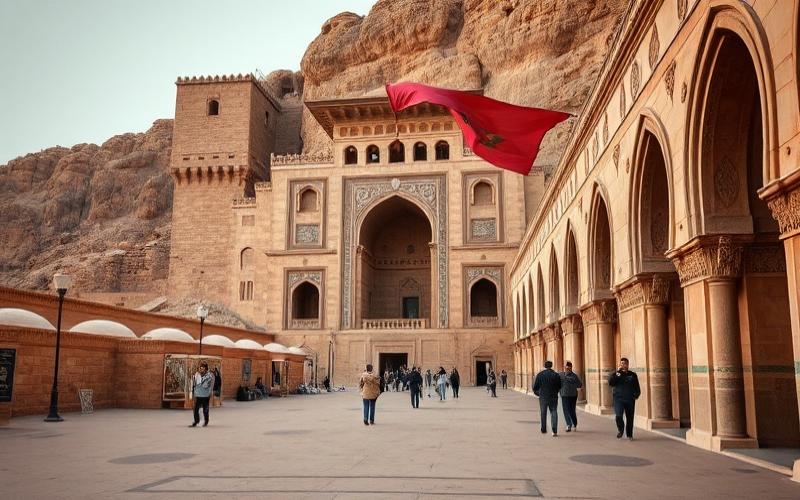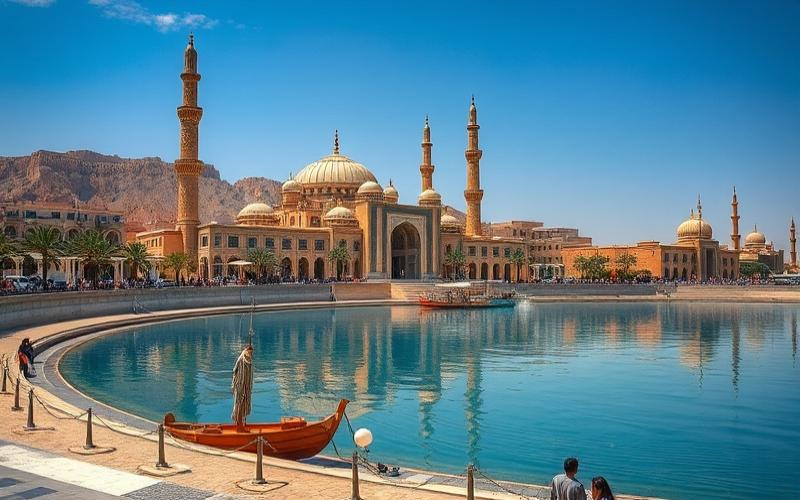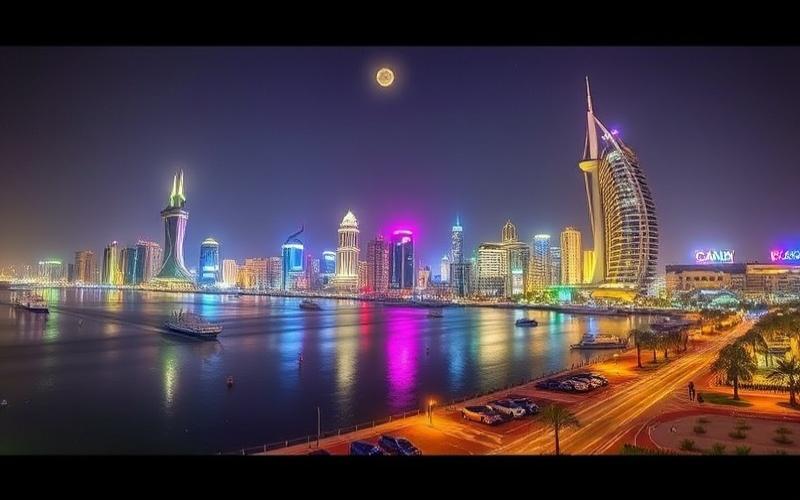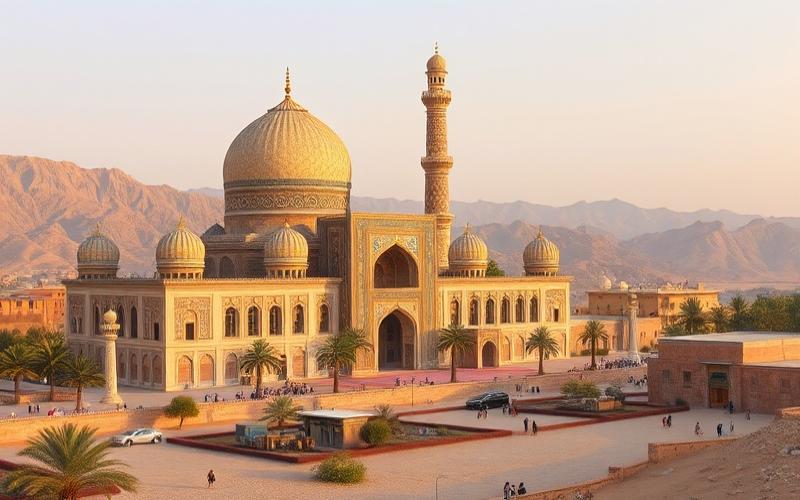
 Published on and written by Cyril Jarnias
Published on and written by Cyril Jarnias
Investing in Parking Facilities in Bahrain: An Attractive Real Estate Opportunity
Investing in parking facilities in Bahrain presents an appealing opportunity in the real estate sector, with promising return prospects. As the kingdom continues to urbanize and attract increasing numbers of international visitors, the demand for well-located parking spaces continues to grow.
Advantages of Investing in Parking Facilities
Additionally, the low maintenance costs and simplified management compared to traditional real estate properties make it an attractive choice for investors seeking to diversify their portfolio while minimizing risks.
Key Points to Consider
However, thorough profitability analysis is crucial, taking into account legal aspects, market fluctuations, and urban mobility trends, to ensure a successful investment in this booming sector.
Good to Know:
Bahrain offers favorable tax conditions for foreign investors in the real estate sector, including parking facilities.
Analyzing the Potential of Parking Facilities in Bahrain
Rapid urbanization in Bahrain, particularly in Manama, leads to sustained growth in parking demand. This dynamic is explained by the expansion of large-scale real estate projects, such as “Bahrain Marina,” which integrate residential, commercial, and tourist areas across several hundred thousand square meters. The increase in private vehicles, a direct consequence of rising living standards and urban development, reinforces this need.
Strategic Areas for Parking:
- Manama (capital and business center)
- Expanding residential neighborhoods
- Tourist areas and mixed-use projects (e.g., Bahrain Marina)
- Proximity to major road arteries and commercial hubs
Locating a parking facility in these sectors offers high occupancy potential and superior profitability, due to space scarcity and activity concentration.
Local Regulations and Impact on Investment:
- New requirement of minimum two spaces per unit in new commercial buildings
- Mandatory integration of waste container spaces to avoid road congestion
- Conversion of abandoned buildings into public parking facilities, facilitating new capacity creation in underserved neighborhoods
These regulations benefit investors by securing profitability through strong structural demand and enhancing the value of properties equipped with parking.
Assessment of Current and Future Demand:
- Continuous urbanization and densification of urban centers
- Growth in private vehicle numbers
- Trend toward individual motorization, despite efforts to develop soft mobility
Trend indicators:
- Regular increase in road traffic
- High occupancy rates in central areas
- Growing need for structured parking solutions
Cost and Potential Revenue Comparison:
| Item | Estimated Cost (average) | Potential Revenues | Main Risks |
|---|---|---|---|
| Land Acquisition | High in city centers | High (strong occupancy) | Land price fluctuations |
| Construction | Moderate to high | — | Administrative delays, cost overruns |
| Operation | Low (excluding maintenance) | — | Maintenance, security |
| Revenues | — | Hourly rental, monthly rental, subscriptions | Vacancy rates, mobility evolution |
Financial Advantages:
- High gross profitability in underserved areas
- Stable and predictable revenues with low vacancy
- Enhanced valuation of equipped real estate properties
Risks:
- Regulations subject to change
- Risk of saturation if supply grows too quickly
- Dependence on automotive market conditions and mobility policies
Technological Innovations and Investment Attractiveness:
- Deployment of smart parking systems: availability sensors, digital payment, real-time management
- Integration of guidance solutions to reduce congestion and improve user experience
- Possibility of dynamic space sharing based on time or attendance
These innovations enable:
- Optimizing occupancy rates
- Reducing operational costs
- Increasing user satisfaction and thus retention
In Summary:
The context of accelerated urban development in Bahrain, combined with favorable regulations and gradual adoption of smart parking technologies, makes the parking sector an attractive investment vector, particularly in strategic hubs like Manama.
Good to Know:
Rapid urban development in Bahrain, particularly in the capital Manama, accentuates the growing need for well-located parking facilities, with increasing demand due to the rise in vehicle numbers. Strategic areas like Manama’s financial district offer interesting opportunities for investing in parking facilities, due to the high concentration of commercial activities. Local regulations impose strict standards on parking infrastructure, which can influence project costs and feasibility. Construction cost analysis reveals that even if the initial investment is high, potential revenues can compensate through competitive parking rates and sustained demand. Technological innovations, such as smart parking systems, help optimize space and can be a key differentiator to maximize revenues and reduce operational expenses. For investors, leveraging these innovations and current trends is crucial to minimize risks and maximize returns.
Advantages of Investing in Parking Spaces in Bahrain
Investing in parking spaces in Bahrain offers several key advantages:
- Growing demand linked to urbanization
Strong urban growth in Bahrain, accompanied by an increase in private vehicles, creates continuous pressure on parking infrastructure. This dynamic ensures sustained demand for parking spaces, particularly in business districts, dense residential areas, and near commercial hubs. - Favorable regulations and investment-friendly environment
Bahraini authorities encourage private investment in the real estate sector, including parking facilities, with a stable and attractive regulatory framework. Certain incentives or simplified administrative procedures can facilitate the acquisition and management of these assets. - Attractive profitability compared to other real estate assets
Parking facilities often offer higher net returns than traditional residential properties. Profitability is explained notably by: - Reduced initial acquisition cost.
- Very low maintenance expenses.
- Simplified management, without major rental complexity.
- Absence of rent control.
- Flexibility to maximize usage (division for two-wheelers, reconfiguration according to demand).
| Criterion | Parking | Residential Real Estate |
|---|---|---|
| Entry Cost | Low | High |
| Maintenance Expenses | Very Low | High |
| Rental Management | Simple | Complex |
| Net Profitability | High | Average to Low |
- Influence of location on profitability
The geographical location of the parking facility is decisive: - Locations near business centers, hospitals, universities, or tourist hubs generate strong rental demand and higher rates.
- In areas undergoing urban densification, land scarcity enhances space valuation.
- Conversely, outlying or poorly served neighborhoods offer lower profitability.
- Long-term perspectives and urban development
Continuous development of urban infrastructure in Bahrain (neighborhood extensions, transport modernization, eco-district projects) supports progressive valuation of parking assets. Integration of innovative solutions (electric vehicle charging stations, smart flow management) increases the added value of these investments in the long term. - Portfolio diversification
Investing in parking facilities allows diversification of a real estate portfolio with an asset weakly correlated to traditional residential or commercial real estate cycles. - Potential adaptation to future trends
Parking facilities can be easily adapted to meet new needs (bicycles, motorcycles, electric vehicles, car-sharing), thus offering resilience to evolving urban uses.
Good to Know:
Investing in parking spaces in Bahrain offers considerable advantages, particularly due to growing demand caused by rapid urbanization and the increase in private vehicles. The parking market is supported by favorable regulations that encourage real estate investments in this sector. Parking spaces, especially those located in strategic areas like shopping centers or business districts, tend to generate superior returns, often exceeding those of other types of real estate investments. Moreover, with urban infrastructure projects in full development in Bahrain, particularly in Manama, long-term prospects promise continuous growth in profitability for savvy investors.
Profitability Study of Parking Facilities in the Region
Initial Cost Analysis:
Concrete Examples of Recent Projects:
| Project | Location | Capacity | Total Cost | Estimated Cost per Space |
|---|---|---|---|---|
| Multistorey Car Parking Muharraq | Urban | 886 spaces | BHD 6,903,750 (~$18.3M) | ~BHD 7,790/space |
| Amakin Pearls Project | Urban | (data not provided) | BHD 4.6M | (not calculable) |
Variation by Location:
- Urban areas: Land acquisition costs are higher, construction often favors multi-level parking to optimize space. Unit costs are therefore higher here.
- Suburban areas: With cheaper land, surface parking is favored, with significantly lower initial investment costs.
Assessment of Potential Revenues:
Average Parking Rates:
- Urban areas (e.g., Manama, Muharraq): Hourly rates generally range from 300 to 500 fils (0.3 to 0.5 BHD) per hour. Monthly subscriptions can exceed 40 BHD for central locations.
- Suburban areas: Hourly rates often below 200 fils (0.2 BHD); monthly subscriptions around 15 to 25 BHD.
Average Occupancy Rate:
- Urban: Between 70% and 95% for well-located spaces, especially near offices, shops, or public infrastructure.
- Suburban: More variable occupancy rates, generally between 30% and 60%.
Example of Annual Revenue Calculation (urban, 886-space parking, 80% occupancy, 0.4 BHD/hour, 10 hours/day, 300 days/year):
Annual revenues = 886 spaces × 80% × 0.4 BHD × 10 h × 300 days
≈ 850,560 BHD/year
Maintenance and Management Costs:
- Routine maintenance (cleaning, technical maintenance, security, lighting): generally estimated between 8% and 12% of annual revenues.
- Management (staff, payment systems, insurance): 4% to 7% of annual revenues.
- Specific costs for multi-level or smart parking (access control, sensors, video surveillance) are higher but can improve operational efficiency.
Taxes and Local Regulations:
- Property taxes and municipal fees vary by usage and location.
- Some areas impose requirements on accessibility, fire safety, or urban integration, which can impact investment and operational costs.
- No corporate profit tax in Bahrain, but municipal fees or permits should be anticipated.
Case Studies and Concrete Examples:
- Success: The multi-level parking in Muharraq, funded at nearly 7 million BHD, helped streamline traffic and support local commercial development, with high occupancy rates.
- Failures: Few documented failure cases in Bahrain, but international experiences show that poor location choices or underestimation of demand can lead to insufficient occupancy rates and low profitability.
Market Trends and Perspectives:
- Digitalization: Deployment of “smart” parking (automated management, online booking, availability sensors).
- Growing demand in urban centers, but stabilization expected medium-term with public transport development.
- Forecasts: Well-located projects adapted to local demand should remain attractive, while peripheral investments require thorough market study to limit under-occupation risks.
Attention: profitability remains highly dependent on location, dynamic rate management, and maintaining a high service level.
Good to Know:
Investing in parking facilities in Bahrain requires careful analysis of initial costs, which vary considerably by location, with urban areas often being more expensive than suburban ones. Potential revenues depend on parking rates, generally higher in city centers, and occupancy rates, with averages often above 70%. Maintenance and management costs, coupled with local taxes, can significantly affect profitability. Specific regulations, such as environmental compliance requirements, must also be considered. For example, a successful project in Manama generated interesting returns through effective management and strategic location near shopping centers. Current trends show growing demand for modern parking solutions, influenced by the increase in vehicle numbers, which could lead to rising construction costs and parking rates in the future.
Disclaimer: The information provided on this website is for informational purposes only and does not constitute financial, legal, or professional advice. We encourage you to consult qualified experts before making any investment, real estate, or expatriation decisions. Although we strive to maintain up-to-date and accurate information, we do not guarantee the completeness, accuracy, or timeliness of the proposed content. As investment and expatriation involve risks, we disclaim any liability for potential losses or damages arising from the use of this site. Your use of this site confirms your acceptance of these terms and your understanding of the associated risks.




